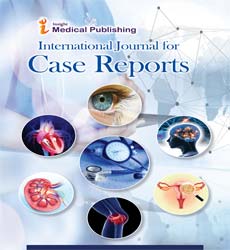Clinical diagnosis of amyoplasia in two infants with arthrogryposis multiplex congenita
Ariam Diaz*
Lincoln Medical and Mental Health Center, United States of America
Received Date: 2022-07-05 | Accepted Date: 2022-07-13 | Published Date: 2022-07-30
Abstract
We present two cases of arthrogryposis multiplex congenita (AMC) with involvement of the lower extremities. In both cases amyoplasia was confirmed by a magnetic resonance imaging (MRI). The degree of amyoplasia correlated with the severity of arthrogryposis and determined the child’s prognosis. Case Series: Case 1 was a 16¬monthold male child with prenatally diagnosed Klinefelter syndrome was born at 36 weeks gestation. Brain MRI was reported as normal. Joint rigidity was detected in upper and lower extremities. Amyoplasia was suspected at nine months of age since the lower limb muscles were hardly palpable. Case 2 was a 5 1 /2 ¬monthold female child and the first child of nonconsanguinous parents was noticed to have rigid right calcaneovalgus and left equinovarus feet deformities as well as knee rigidity with limitation of knee extension. Bilateral hip displacement was also diagnosed. Absence of muscles on thigh palpation prompted MRI study. Conclusion: Although amyoplasia is the most common type of arthrogryposis multiplex congenita, muscle underdevelopment in these patients remains puzzling for pediatric practitioners. Amyoplasia congenita is usually symmetrical and involves either all extremities or selectively only the lower or upper extremities. Absence of muscle groups on MRI confirms diagnosis of amyoplasia. Early recognition of amyoplasia in children with arthrogryposis multiplex congenita can help in tailoring their treatment and prognosis.
Open Access Journals
- Aquaculture & Veterinary Science
- Chemistry & Chemical Sciences
- Clinical Sciences
- Engineering
- General Science
- Genetics & Molecular Biology
- Health Care & Nursing
- Immunology & Microbiology
- Materials Science
- Mathematics & Physics
- Medical Sciences
- Neurology & Psychiatry
- Oncology & Cancer Science
- Pharmaceutical Sciences
